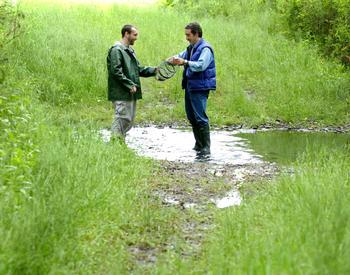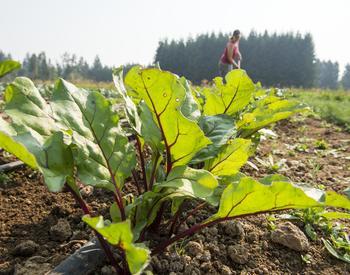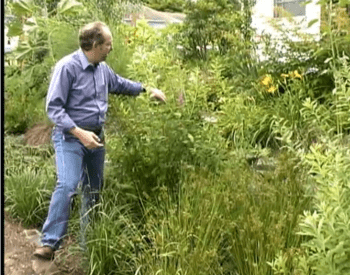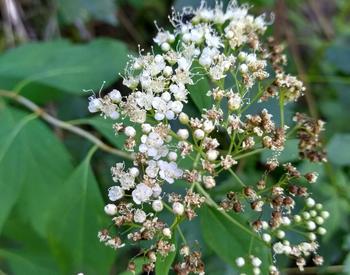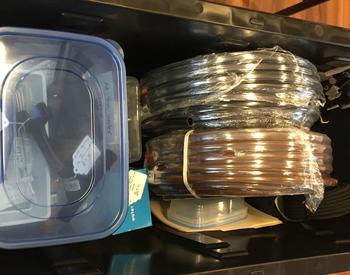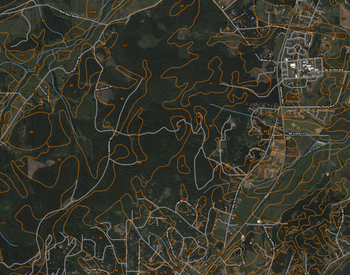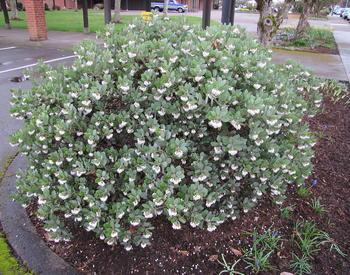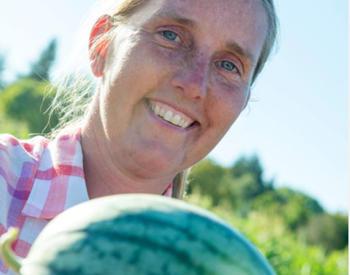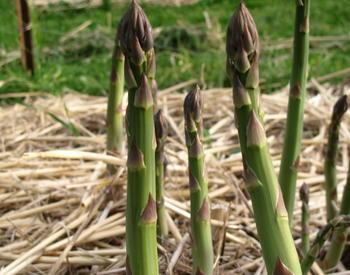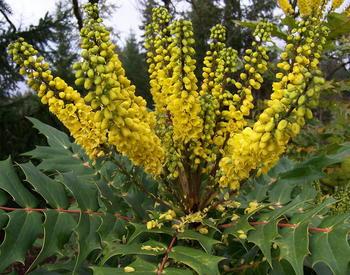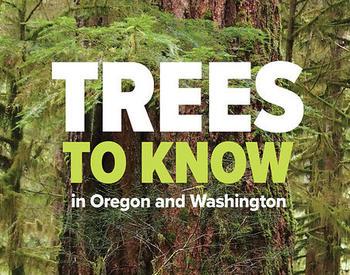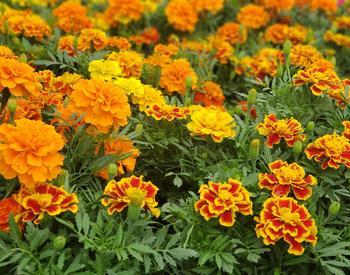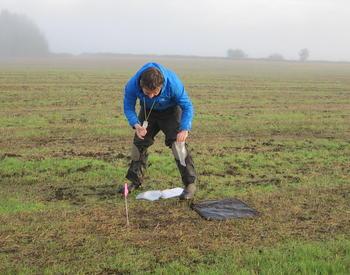Transcript
Welcome to Living on the Land, an award-winning source of useful information brought to you by your Oregon State University Extension Service. There's a whole world right under your feet. The soil is alive, and it should be treated that way. Farmers and gardeners use soil in several ways, focusing on its support of plants.
But soil also stores and filters water recycles nutrients, and provides habitat for animals. Soil health is the capacity of soil to function in these ways. It depends on a balance of soil's physical, chemical, and biological components. Let's talk about soil biology. Soil is much more than a collection of minerals. Every teaspoon of soil contains billions of living organisms. Each of these organisms has a job to do in soil. Bacteria are soil decomposers. They decompose dead organisms and minerals. They also convert chemical compounds from one form to another. For example, they transform nitrogen, N2, from air into ammonium, NH4, a form of nitrogen that plants can use.
This process is called fixation. Fungi are soil explorers. They seek out water and nutrients and exchange them with plants for food, such as sugars. Protozoa and nematodes are soil hunters. They consume other organisms and produce microbial manure, an excellent plant fertilizer. Earthworms are soil engineers.
They work the soil and break down organic matter, making soil stronger and more fertile. Each acre of soil contains enough organisms to equal the weight of two cows. So you can be sure the soil is hungry. Like humans, the soil requires nutrition, such as carbohydrates, proteins, and vitamins.
The source of this nutrition is the sun's energy. As they use photosynthesis to harvest sunlight, plants' roots leak substances called exudate, sugars, and acids, to feed the soil microbiology, bacteria, and fungi. In exchange, these soil microbes provide plants with minerals from their waste, including nitrogen, phosphorus, and potassium. This beneficial relationship encourages microbes to live in soil near plant roots. The roots leak sugars and acids that feed soil microbiology, such as bacteria and fungi. Microbial manures are sticky and cause soil to clump into aggregates.
Stable aggregates create a good soil structure with pores for sufficient aeration and water infiltration. The living and dead plants and organisms found in soil are collectively called soil organic matter. Although organic matter makes up only a small percentage of soil by volume, generally only 1-5%, it's essential for healthy soil. Here are five soil health principles. Principle number one, keep the soil covered. Healthy soils have a protective surface layer of plant residue to control soil temperature and reduce evaporation. This maintains a favorable environment for soil biology. You can preserve residue to keep the soil covered by leaving crop residues in the field. reducing tillage and adding organic mulch.
For more information, watch the YouTube Undercover Farmers. Principle number two, don't disturb the soil. Soil like people can sustain stress, but chronic stress can have devastating health effects. Management practices that stress the soil include tillage, overgrazing, and pesticide use. These often destroy soil biology and stimulate the rapid decomposition of valuable organic matter.
It takes years to lose organic matter and years to gain it back. Minimize your soil disturbance to minimize organic matter loss. To learn more, watch the YouTube Soil Health Principles by Ray Archuleta. You can tell your soil is healthy if it feels spongy, cool, and loose, looks dark, and smells sweet and earthy.
You'll know your soil is unhealthy if it feels hard, warm, and chunky, looks pale and devoid of life, and has a metallic or sour smell. Principle number three, keep living roots growing. To maximize soil improvement, harvest as much sunlight as possible. Do this by keeping plants and their roots growing. This feeds soil organisms and adds vital organic matter to the soil. You can plant cover crops between cash crops to cover soil, add organic matter, reduce erosion, add diversity, and suppress weeds. Try to plant several different species that work cooperatively and fit your budget and management needs. You can learn more about cover crops at the USDA's Sustainable Agriculture Research and Education website. Look for a publication called Managing Cover Crops Profitably Third Edition.
You can download the online version of this book for free. Principle number four, maximize diversity. The power of diversity is phenomenal. Each plant uniquely supports soil and its own herd of microbes. To gain the most benefit, grow different plants each season and across the farm to diversify plant cover. You can use crop rotation and intercropping to introduce more diversity.
Try to include in your cropping system as many of the functional plant groups as you can. For cool-season grasses, use wheat and ryegrass. Warm-season grasses to use are corn and millet. For cool-season broadleaf plants, try peas and radish. Warm-season broadleaf plants to use are soybeans and sunflowers. For more information, check out the publication Crop Rotations on Organic Farms, available from the USDA Sustainable Agriculture Research and Education website.
You can also download the online version of this book for free. Principle number five, integrate managed livestock. Ruminant animals such as cattle and deer shelter microbes in their digestive systems. These microbes increase nutrient cycling by helping to decompose plant residues all year, even when it's too hot, dry, or cold for soil biology to be active. Grass grazed by livestock then responds with vigorous growth that feeds the soil. You can care for soil by using a grazing management system. If livestock are not an option for you, then mowing can mimic many benefits of grazing. Find out more about managed grazing in pasture principles for smaller acreages, available at the University of Idaho Extension. You can download this publication for free. For more information on soil health, contact your local OSU Extension Service Agent, Soil and Water Conservation District, or Natural Resources Conservation Service.
This podcast is part of the Living on the Land series. It provides concise information on to ensure you have healthy, productive soil. Topics include cover crops and role that bacteria, fungi, nematodes and worms play in the formation and overall health of your soil.
This is from the Living on the Land series. Download the related PDF - Living on The Land: Soil Health Principles
The phrase “Living on The Land” is used with permission from Living on The Land Stewardship for Small Acreage, © 2008, UNCE/WSARE.
